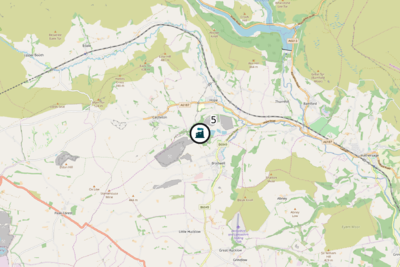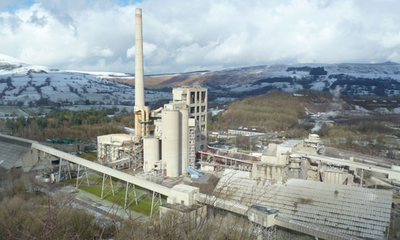Hope Cement Kiln
| Hope Cement Kiln | |
 See Cement Kilns → page for a larger UK Wide map. | |
| Waste Licence | BP3731VJ |
| Operator | Breedon Cement |
| Parent Company | Breedon Group |
| Clinker Capacity | 1.3 Mt |
Summary site information collated from a variety of sources.

Overview
WikiWaste has used the website Cement Plants and Kilns in Britain and Ireland[1] extensively for the reference material for each individual cement kiln page. The detail on this reference website is extensive and as WikiWaste is focused upon the UK waste and resource market, only the key highlights are captured from this website (and company websites accordingly) to provide background and context. Hope started manufacturing clinker in 1929 and up to 2015 had produced 68 million tonnes of clinker through 7 rotary kilns over this period.
Ownership
- 1929 to 2001 BPCM (G&T Earle)(Blue Circle)
- 2001 to 2013 Lafarge
- 2013 to 2017 Hope Construction Materials
- 2017 to Present Breedon Cement (part of the Breedon Group)
The Process at Hope
The process at the site is similar to that at Cookstown - a 'semi-dry process' from kiln supplier Polysius (part of the ThyssenKrupp group).
Raw Materials
The primary raw materials are Carboniferous Limestone and Boulder Clay and Carboniferous Shale.
Waste Used on Site
The Hope site waste return to the EA for the most recent year of 2018 showed 147,546 tonnes of the following wastes used on site:
| Waste Class | Description | Tonnage Input |
|---|---|---|
| 10 01 02 | coal fly ash | 75,187 |
| 10 01 15 | bottom ash, slag and boiler dust from co-incineration other than those mentioned in 10 01 14 | 595 |
| 16 01 03 | end-of-life tyres | 30,952 |
| 19 12 04 | plastic and rubber | 2,883 |
| 19 12 10 | combustible waste (refuse derived fuel) | 34,587 |
| 19 12 11* | other wastes (including mixtures of materials) from mechanical treatment of waste containing dangerous substances | 77 |
Around 40% of the tonnage listed was used for the primary purpose of substituting fuel requirements in the plant, with coal fly ash (also called Pulverized Fuel Ash or PFA) used in as a replacement for raw material (shale) in the production process[2].
